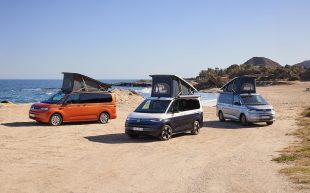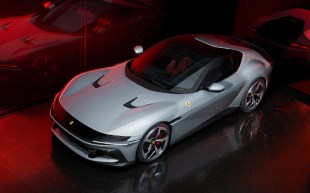James Dyson reveals full scale of work that went into abandoned electric car project
'A brilliant car with very special features, by a very intelligent, hardworking team'
ENTREPRENEUR James Dyson has revealed more information about the abandoned electric car project that cost him half a billion pounds of his own money.
Revealed for the first time last month exclusively by The Sunday Times, the Dyson car featured twin electric motors claimed to produce 536bhp and 480 lb ft of torque, allowing a 0-62mph sprint in 4.8 seconds. It was also said to be have a range of 600 miles per charge, “even on a freezing February night, on the naughty side of 70mph on the motorway, with the heater on and the radio at full blast”.
Now Mr Dyson, 73, and Britain’s richest man, according to the Sunday Times Rich List 2020, has released new information, images and video (which you can see here). “We never usually show our aborted projects,” says the inventor, famous for his cyclonic vacuum cleaners and hand driers. “However, it felt right to give a glimpse of the Dyson car to show what the team achieved.”
The 500-strong team was based at a disused Military Airfield at Hullavington, Wiltshire, that was converted into a state-of-the-art development centre at the cost of £250m. After the electric car project was canned the ill-fated plant was used to make ventilators during the coronavirus pandemic, though the government order for 10,000 of a prototype device called the CoVent, which the company designed in a fortnight, was later cancelled. Hullavington has now been earmarked by Dyson as a venue for future projects.
“I think you get an idea of the scale of the project, and how thoroughly we went into it,” says Dyson, as shots of employees lovingly crafting models, working on simulators and engaging in group discussion flash by. There’s also footage of the first drive of the Dyson car (officially called the N526), before Dyson gives a tour of the model.
Previous coverage had already established that it’s a sleek vehicle, with huge wheels (nearly a metre in diameter if you include the tyres), a steeply angled windscreen and sculpted frame. But the video gives insight into the minutiae of the car’s design — for example, there are no door handles, but rather a ridge in the car’s body under which you can slide your hand to gain access.
There’s also the way that the panel covering the electric charging socket slides open as if there should be a wisp of accompanying smoke from an 80s sci-fi movie. The controls are on the steering wheel are laid out in the same manner as those on the wheel of an F1 car, so that there are “no things to fiddle around with and distract you”. There’s a further look at the car’s unique seats, as well as a look at the centre console, which seems to have wireless phone charging integrated.
“It’s a brilliant car with very special features, by a very intelligent, hardworking team,” Dyson continues, before explaining that the project, “in the present time just wasn’t commercially viable.”
There’s a hint of the personal sadness he expresses in his Sunday Times interview, when he says: “It’s a great shame… that’s probably the best way of putting it.”
To read the full interview with Dyson, head to The Sunday Times website.
Tweet to @KieranAhuja Follow @KieranAhuja
Car industry pushes for scrappage scheme to boost petrol and diesel sales




